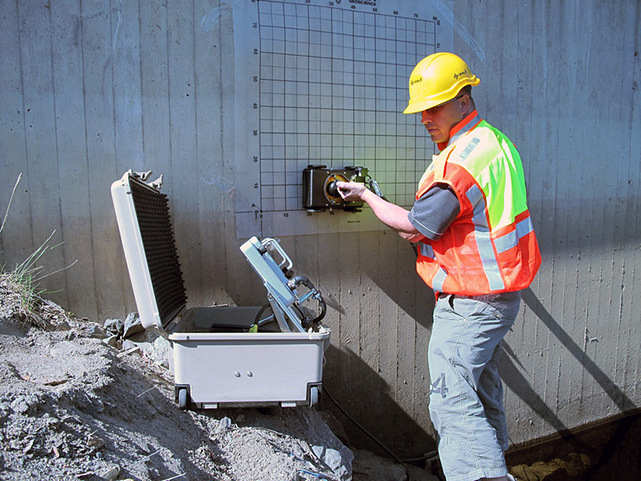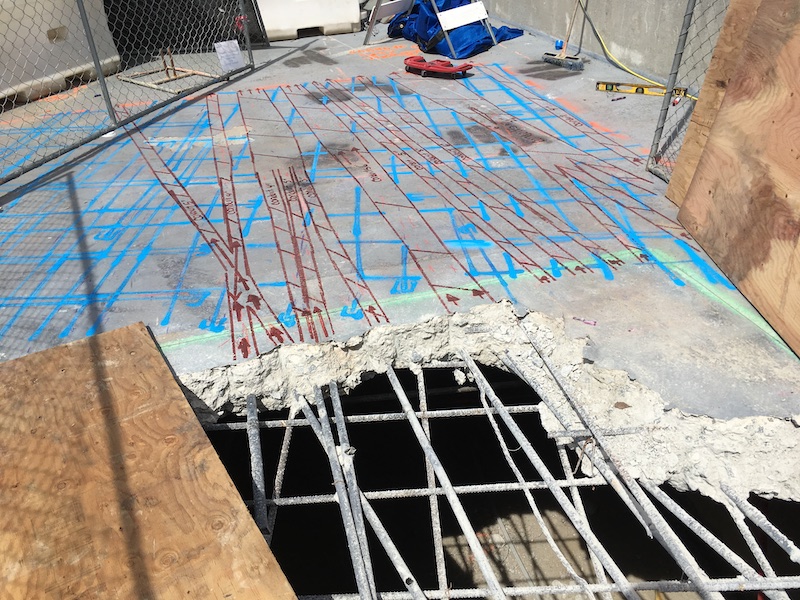Unveiling the Power of RainierGPR Concrete Scanning Modern Technology
Unveiling the Power of RainierGPR Concrete Scanning Modern Technology
Blog Article
Harness the Strategic Edge of Concrete Scanning for Unparalleled Job Success and Quality Control
In the world of contemporary building and construction and infrastructure advancement, the application of concrete scanning technology has actually arised as a critical tool for ensuring task success and maintaining high quality standards. This ingenious approach supplies a calculated edge by offering crucial insights right into the architectural integrity of concrete elements, consequently making it possible for informed decision-making throughout the task lifecycle. By delving into the depths of concrete structures and revealing surprise abnormalities, stakeholders can proactively resolve possible threats, streamline operations, and enhance source appropriation. Nonetheless, truth power of concrete scanning lies not just in its ability to boost task outcomes yet additionally in its ability to change conventional techniques, establishing a new standard for precision and efficiency in the construction sector.
The Importance of Concrete Scanning
Concrete scanning is a necessary action in building projects to ensure the safety and security and honesty of frameworks. By making use of numerous scanning innovations such as Ground Penetrating Radar (GPR) and electro-magnetic induction, construction teams can non-destructively review the subsurface of concrete frameworks to determine potential threats like rebar, conduits, or post-tension cable televisions. This details is vital for job contractors, engineers, and supervisors to make enlightened choices and stay clear of pricey blunders throughout the building and construction process.
One of the primary reasons that concrete scanning is so important is its ability to stop crashes and injuries on the building and construction website. Unintentionally reducing through a live electrical channel or damaging post-tension cables can have disastrous consequences, not only in terms of safety yet also in terms of task delays and economic implications. By conducting detailed concrete scanning prior to any kind of drilling, cutting, or coring tasks, building and construction groups can alleviate risks and create a more secure working environment for everybody included.
In enhancement to security considerations, concrete scanning additionally plays a crucial role in making sure the long-term durability and quality of the structure. By identifying any type of defects or abnormalities concealed underneath the surface area, such as voids or delamination, very early intervention can be carried out to deal with these issues prior to they intensify into more considerable issues. Inevitably, purchasing concrete scanning is a positive step that can save time, money, and resources in the long run, while also upholding the highest possible criteria of building quality.
Advanced Innovation for Specific Results

By including these sophisticated innovations right into concrete scanning techniques, building and construction groups can simplify process, decrease job hold-ups, and ensure the general top quality and success of the task. The precision and efficiency supplied by these tools contribute significantly to the task's success by assisting in informed decision-making and developing top quality guarantee procedures.
Enhancing Project Effectiveness and Timelines

Furthermore, concrete scanning makes it possible for teams to recognize architectural weak points and potential threats at an early stage, enabling prompt remediation and stopping mishaps that can derail project timelines. The real-time information given by scanning tools assists in informed decision-making, resulting in smoother control among different professions and stakeholders. This boosted partnership decreases disputes, enhances efficiency, and ultimately accelerates job distribution.
Additionally, by proactively addressing problems with concrete scanning, building groups can check that adhere to routines better, lower downtime, and maximize source allowance. The ability to identify surprise barriers and confirm structural integrity effectively adds to total job effectiveness and timelines, guaranteeing successful outcomes and client complete satisfaction.
Ensuring Safety And Security and Danger Mitigation

Threat reduction approaches can be enhanced through the in-depth details given by concrete scanning, allowing project groups to make enlightened decisions that reduce the likelihood of unforeseen cases. Furthermore, by precisely mapping out subsurface problems, specialists can avoid pricey rework, hold-ups, and damage to existing frameworks, even more adding to general task security and success. Applying concrete scanning as a regular method not just makes certain a more secure job atmosphere yet additionally infuses self-confidence in stakeholders concerning the project's commitment to quality and risk monitoring.
Quality Control Through Concrete Scanning
Concrete scanning plays a critical role in maintaining quality guarantee standards within building and construction projects. By using advanced scanning innovations such as Ground Penetrating Radar (GPR) and Concrete X-ray, job managers and designers can guarantee the honesty and high quality of concrete structures. With concrete scanning, prospective problems, such as spaces, cracks, or enhancing bar blockage, can be spotted non-destructively, permitting timely interventions to keep the structural honesty of the project.
Quality control with concrete scanning not just assists in recognizing existing problems but also enables aggressive actions to stop future problems that could compromise the security and long life of the structure. By carrying out comprehensive scans at crucial stages of construction, teams can verify the accuracy of Bonuses structural strategies, validate the positioning of vital elements, and attend to any type of deviations immediately. This aggressive method reduces rework, lowers expensive hold-ups, and inevitably results in the distribution of high-quality, resilient structures that fulfill or exceed market criteria.
Conclusion
In verdict, concrete scanning plays a crucial duty in making certain job success, quality, security, and efficiency assurance. The critical side provided by concrete scanning allows for positive threat reduction and improves overall project management.
In the realm of modern-day building and construction and facilities advancement, the use of concrete scanning technology has arised as a crucial device for making certain task success and keeping top quality criteria. By incorporating these sophisticated technologies into concrete scanning practices, building and construction teams can improve operations, minimize job hold-ups, and guarantee the general top quality and success of the job.Provided the vital nature of job efficiency and timelines in construction management, the focus now shifts in the direction find out this here of ensuring safety and security and mitigating threats within the task environment.Concrete scanning plays a pivotal function in upholding high quality guarantee criteria within building and construction tasks. By using advanced scanning innovations such as Ground Penetrating Radar (GPR) and Concrete X-ray, project supervisors and designers can guarantee the integrity and top quality of concrete structures.
Report this page